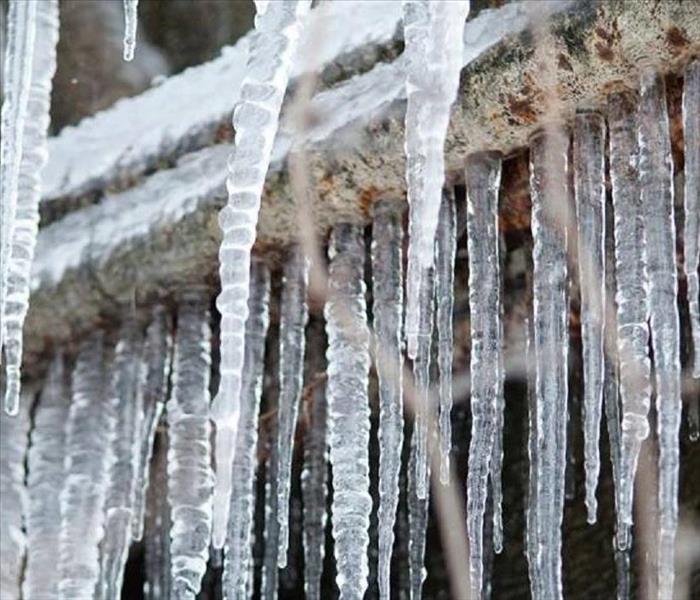Winter Prep Profile: Preventing Frozen Pipes
12/12/2018 (Permalink)
In last week’s Winter Prep Profile Team SERVPRO of West Brown County gave you a rundown of steps you can (and should!) take to prepare your home and/or business for the winter weather to come. One of the most important of those steps is preventing your pipes from freezing!
And, as we said last week, this is such an important step, we feel it deserves its very own profile.
As you probably know, freezing weather makes water freeze and when water freezes it expands. That means if water freezes in a pipe, whether that pipe is made of metal or plastic, that frozen water can be strong enough to break that pipe. And if a pipe breaks, that can lead to serious consequences like flooding and water damage in your home or business.
SERVPRO of West Brown County does not want to see you experience any of that damage this winter. So, we’re sharing the American Red Cross’s advice for preventing frozen pipes. First, here’s a list of the pipes the Red Cross says are most likely to freeze:
- Any pipes that are outside and exposed to severe cold. These include outdoor hose bibs, sprinkler lines and swimming pool supply lines.
- Water supply pipes in unheated interior areas like basements and crawl spaces, attics, garages, or kitchen cabinets.
- Pipes that run along exterior walls with little or no insulation.
To prevent these pipes from freezing the Red Cross advises the following:
- Drain water from swimming pool and water sprinkler supply lines following manufacturer's or installer's directions. Do not put antifreeze in these lines unless directed.
- Remove, drain, and store hoses used outdoors. Close inside valves supplying outdoor hose bibs. Open the outside hose bibs to allow water to drain. Keep the outside valve open so that any water remaining in the pipe can expand without causing the pipe to break.
- Add insulation to attics, basements and crawl spaces.
- Check around the home for other areas where water supply lines are located in unheated areas. Look in the garage, and under kitchen and bathroom cabinets. Both hot and cold water pipes in these areas should be insulated.
- Keep garage doors closed if there are water supply lines in the garage.
- Open kitchen and bathroom cabinet doors to allow warmer air to circulate around the plumbing.
- Consider running water (even a drip) through faucets served by exposed pipes on extremely cold days.
- Keep the thermostat set to the same temperature both day and night.
- If you leave for an extended period of time, keep your thermostat at at least 55 degrees.
According to the Red Cross, if you turn on a faucet and only a trickle comes out, you likely have a frozen pipe. You can try to fix the problem by taking the following steps:
- Keep the faucet open. Running water will help thaw the pipe. You will also be able to tell when the problem is fixed when water starts running normally again.
- Apply heat to the section of pipe using an electric heating pad wrapped around the pipe, an electric hair dryer, a portable space heater (kept away from flammable materials), or by wrapping pipes with towels soaked in hot water. DO NOT use a blowtorch, kerosene or propane heater, charcoal stove, or other open flame device.
- If you cannot find the frozen area or fix the problem on your own, call a licensed plumber right away.
- If you have one frozen pipe, check other faucets in your home to see if you have others.
And remember, if worse comes worst and you do experience a frozen pipe that leads to water damage at your home or business, you can call us any time, 24 hours a day, 7 days a week (even on holidays!) at 920-434-8224.


 24/7 Emergency Service
24/7 Emergency Service
